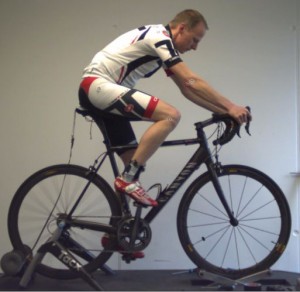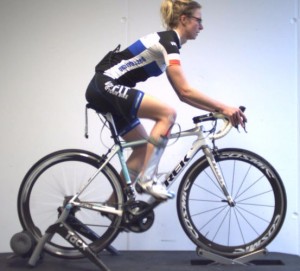WOMEN’S-SPECIFIC FRAME GEOMETRIES – A MUST-HAVE ?
Every spring, the topic of women’s-specific frame geometries comes up and is extensively reviewed by the biking magazines. So we start asking ourselves: Do I need that? Do I want that? And obviously, how big an advantage would I have?
To get a grasp of this topic, this entry discusses the perspective of a female bikefitter on women’s-specific frame geometries.
There is no doubt that on average women and men have different body measurements. The average woman has a shorter upper body and shorter arms than the average man. Many manufacturers thus offer women’s-specific frames with a shorter top tube to accommodate for this. Notwithstanding the fact that nobody is made up of averages, these values cannot account for an important factor: the flexibility.
Women often have a good hip mobility, causing them to push their hip further forward in the road bike position. The few centimetres difference in the reach are thus easily made up for. In addition, the adjusted sitting position also depends on other factors such as the cadence and the terrain. A sitting position for a strong rider in the mountains is different from that for one pedalling at high cadence over wide planes. This cannot be accounted for by a women’s-specific geometry, as there is nothing ‘gender specific’ here.
Due to their often lower weight and strength, women have a clear advantage from light material. As women’s-specific frames are often heavier than the ‘unisex’ frames in the same price range, this is a clear argument against buying a women’s bike.
Furthermore, the ever-increasing choice of ‘modern’ concepts with, for example, steeper seat tube angles and a variable head tube length, offers significantly more choice than a few years ago.
However, one cannot fully ignore the special demands of a woman. There are some cases in which a special size seems unavoidable, for example with a height below 162 cm. Finding a sportive ‘standard’ frame becomes hard in this range. The bike needs to be assembled matching the bodily and performance-related characteristics of the rider: For many women a narrow handlebar, adjusting the position of the brakes and an ideal gear transmission ratio are advantageous.
Summary: A geometry that matches the rider and an individually adjusted sitting position are necessary for continued riding pleasure; a women’s-specific frame geometry however is rarely needed. The choice of the fitting frame and a well-devised assembly with an eye to the details are decisive in creating the perfect symbiosis of woman and machine.
Sources:
Tilley, ART „The Measure of Man and Woman“ 2002
Glaskin, M “Cycling Science” 2012
Author:
Lotte Kraus




